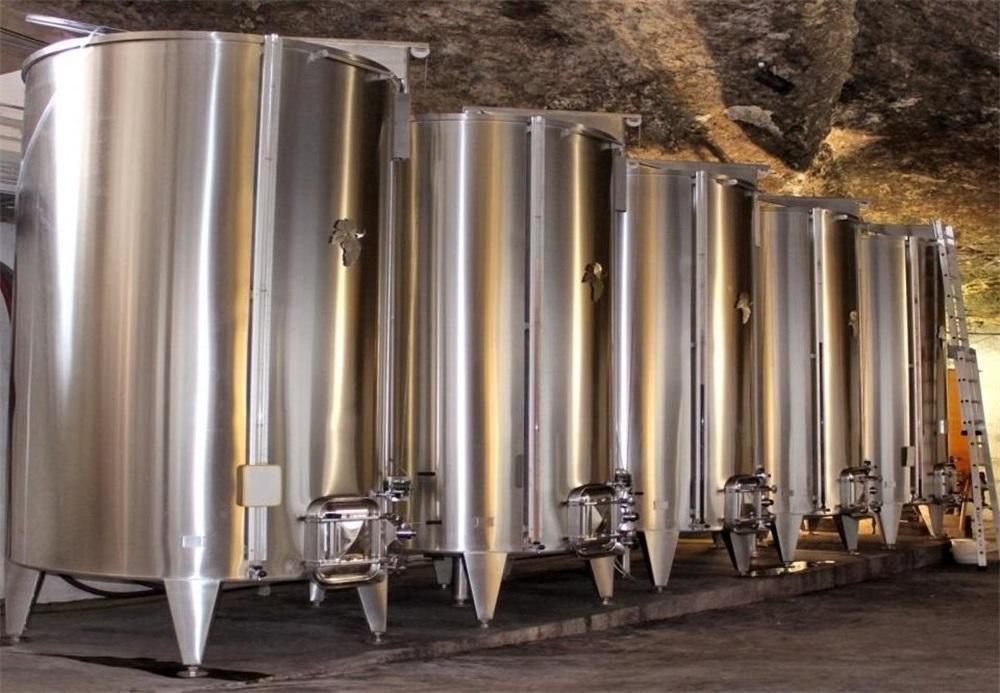
1. Vineyard Management & Grape Harvesting
· Grape Selection: Industrial wine production starts with carefully selecting grape varieties such as Cabernet Sauvignon, Merlot, Pinot Noir, or Syrah based on the desired wine style.· Harvest Timing: Grapes are harvested at peak ripeness, usually determined by sugar levels (Brix), acidity (pH), and flavor. Industrial producers often use mechanical harvesters for speed and efficiency.
· Grape Transport: Once harvested, grapes are transported to the winery in temperature-controlled conditions to prevent oxidation and premature fermentation.
2. Crushing & Destemming
· Crushing and Destemming Machines: In industrial winemaking, the grapes are fed into machines that both crush the grapes and remove the stems. The crushed grapes, including juice, skins, seeds, and pulp (called the must), are collected for fermentation.· Must Treatment: Depending on the style, the must may be treated with sulfur dioxide (SO₂) to prevent oxidation and control microbial activity.
3. Fermentation
· Large Fermentation Tanks: The must is transferred to large stainless steel tanks or concrete vats for fermentation. These tanks are temperature-controlled to ensure consistent and optimal fermentation conditions.· Yeast Inoculation: Commercial yeast strains (Saccharomyces cerevisiae) are often added to initiate fermentation, ensuring predictable results. Natural fermentation (using indigenous yeasts) can also be employed but is less common in large-scale production due to variability.
· Temperature Control: Red wine fermentation temperatures are maintained between 70°F and 85°F (21°C to 29°C) to extract maximum flavor, color, and tannins from the grape skins.
· Cap Management: As fermentation progresses, grape skins rise to the top, forming a "cap." This cap is regularly "punched down" or "pumped over" to keep it submerged, ensuring better extraction of flavors, tannins, and color.
4. Maceration and Skin Contact
· Extended Maceration: For some red wines, winemakers may extend the time the wine spends in contact with the grape skins (after fermentation is complete) to further extract tannins and color. This process can last anywhere from a few days to several weeks.· Pressing: Once the desired level of extraction is reached, the wine is pressed to separate the liquid from the solids (skins, seeds, etc.). The remaining liquid is transferred to tanks or barrels for the next stage.
5. Malolactic Fermentation (MLF)
· Lactic Acid Bacteria: After primary fermentation, most red wines undergo a secondary process called malolactic fermentation (MLF), where lactic acid bacteria convert sharp malic acid (found in apples) into softer lactic acid (found in milk). This softens the wine’s acidity and contributes to a smoother mouthfeel.· Controlled in Tanks or Barrels: This process can be done in stainless steel tanks or barrels, depending on the desired wine profile.
6. Aging and Maturation
· Barrel Aging: Red wines are typically aged in oak barrels (French or American oak) to enhance complexity, add flavors like vanilla, spice, and toast, and soften tannins. Industrial wineries may use large oak barrels or alternatives like oak chips or staves to accelerate the process and reduce costs.· Stainless Steel: Some red wines, especially lighter styles, may be aged in stainless steel to retain their fresh, fruity characteristics.
· Duration: The aging period can range from a few months to several years, depending on the wine’s style and market positioning.
7. Clarification & Stabilization
· Fining: Before bottling, the wine may undergo fining to remove unwanted particles. Fining agents like bentonite (a type of clay), egg whites, or gelatin can be added to attract and remove suspended solids, proteins, or excess tannins.· Filtration: The wine is often filtered to remove yeast, bacteria, and other particulates, ensuring clarity and stability in the bottle.
· Cold Stabilization: To prevent tartrate crystals from forming in the bottle, the wine is chilled to near-freezing temperatures, allowing these crystals to form and be removed before bottling.
8. Blending (Optional)
· Blending: In industrial wine production, winemakers often blend different batches or grape varieties to achieve a consistent flavor profile. This blending may occur after fermentation or aging, depending on the style.9. Bottling
· Sterile Bottling: The wine is transferred to an automated bottling line where it’s bottled under sterile conditions to prevent contamination. Some wines are bottled with minimal oxygen exposure (using nitrogen or carbon dioxide) to prevent oxidation.· Corking or Sealing: Bottles are sealed with cork, synthetic cork, or screw caps, depending on market preferences.
· Labeling and Packaging: Once sealed, the bottles are labeled and packaged for distribution.
10. Quality Control
· Testing: Throughout the process, winemakers and lab technicians regularly test the wine for sugar levels (Brix), acidity (pH), sulfur dioxide levels, and microbial stability. Sensory evaluation (tasting) is also essential to ensure consistency and quality.· Aging in Bottle: Some red wines are allowed to age further in the bottle before being released to the market, allowing flavors and tannins to integrate.
11. Marketing and Distribution
· Market Positioning: After bottling, the wine is marketed and distributed based on its target consumer. Different strategies are employed for mass-market wines versus high-end, boutique labels.Key Differences in Industrial Wine Production:
· Efficiency: Industrial wine production focuses on maximizing efficiency and consistency. Techniques like mechanical harvesting, large-scale fermentation, and the use of additives (like sulfur dioxide and fining agents) streamline production.· Automation: Automated systems are used for crushing, fermentation management, bottling, and packaging, ensuring high volume and consistency.
· Economies of Scale: Industrial wineries benefit from economies of scale, producing large quantities of wine at a lower cost per unit.
By using these techniques, industrial wineries can produce large volumes of red wine, maintaining consistent quality while optimizing costs and production time.
If you need wine/beer/kombucha brewing equipment or microbrewery equipment, please contact us:
Ivy Liang(Sales Director)
Email: [email protected]


.jpg)
.jpg)
.jpg)

Get In Touch